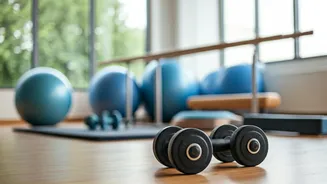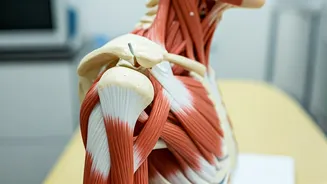Understanding Parkinson's Exercise
Parkinson's disease impacts the nervous system, which can cause tremors, stiffness, and balance issues. Physical exercise is a crucial element in managing
the condition. Exercises can help alleviate symptoms, enhance motor control, and bolster physical function. Regular workouts can also improve flexibility and reduce the risk of falls. Exercise also provides psychological benefits, such as boosting mood and decreasing anxiety. Tailoring exercise routines to individual needs is essential for achieving the most effective results. Consulting with a healthcare professional or a physical therapist will help create a safe and effective plan. The goal of exercise is to maintain mobility and enhance the individual's ability to carry out day-to-day tasks.
The Arm Circles Exercise
Arm circles are a simple yet effective exercise for improving shoulder and arm mobility. This exercise helps to reduce stiffness in the shoulders and increases range of motion. Start by standing with your feet shoulder-width apart, arms extended to the sides. Begin with small, forward circles with your arms, gradually increasing the size of the circles. Perform this for about 30 seconds, then switch to backward circles for another 30 seconds. The benefits include enhanced flexibility, and reduced muscle tension. This exercise can be done anywhere, anytime. Be sure to keep your core engaged to maintain balance. The regular practice of arm circles helps maintain the mobility of the upper body and reduces stiffness.
The Heel-Toe Walk
The heel-toe walk is beneficial for enhancing balance and gait stability. Start by standing with your feet together, then take a step forward, placing your heel down first. Next, shift your weight forward onto the toes of that foot, mimicking a line. Repeat this, alternating feet, moving forward across the room. Aim for 10-15 steps at a time. The heel-toe walk can significantly improve coordination and reduce the risk of falls. This exercise improves stability and overall gait patterns. You might want to use a wall or chair for support, especially if balance is a concern. Be mindful of your posture, keeping your back straight and your eyes forward during the exercises. Consistent practice will lead to improvements in both balance and confidence.
Seated Marches Exercise
Seated marches help to strengthen the leg muscles and enhance mobility. Begin by sitting upright in a chair with your feet flat on the floor. Lift one knee towards your chest, hold it for a few seconds, then lower it back down. Alternate legs, repeating the movement for 10-15 repetitions on each side. Seated marches contribute to improved lower body strength, and better motor control. It is also a good cardiovascular exercise. This exercise is easy on the joints and can be easily incorporated into daily routines. Ensure you maintain good posture throughout the exercise, engaging your core and keeping your back straight. Regular participation can improve leg strength and enhance the ability to move around with greater ease.
Stretching for Flexibility
Stretching is vital for preserving and enhancing flexibility, which is often compromised in Parkinson's disease. Incorporate stretches into your daily exercise routine to help reduce stiffness and improve range of motion. Begin by gently stretching your neck from side to side and forward and backward. Extend your arms overhead and stretch, then rotate your torso. Hold each stretch for about 20-30 seconds. Flexibility exercises aid in maintaining the range of motion and also lessen muscle rigidity. Focus on deep, controlled breathing while you stretch to maximize the advantages. Be gentle and do not push beyond a comfortable range. Regular stretching will promote flexibility, and contribute to your general physical health and mental well-being.











